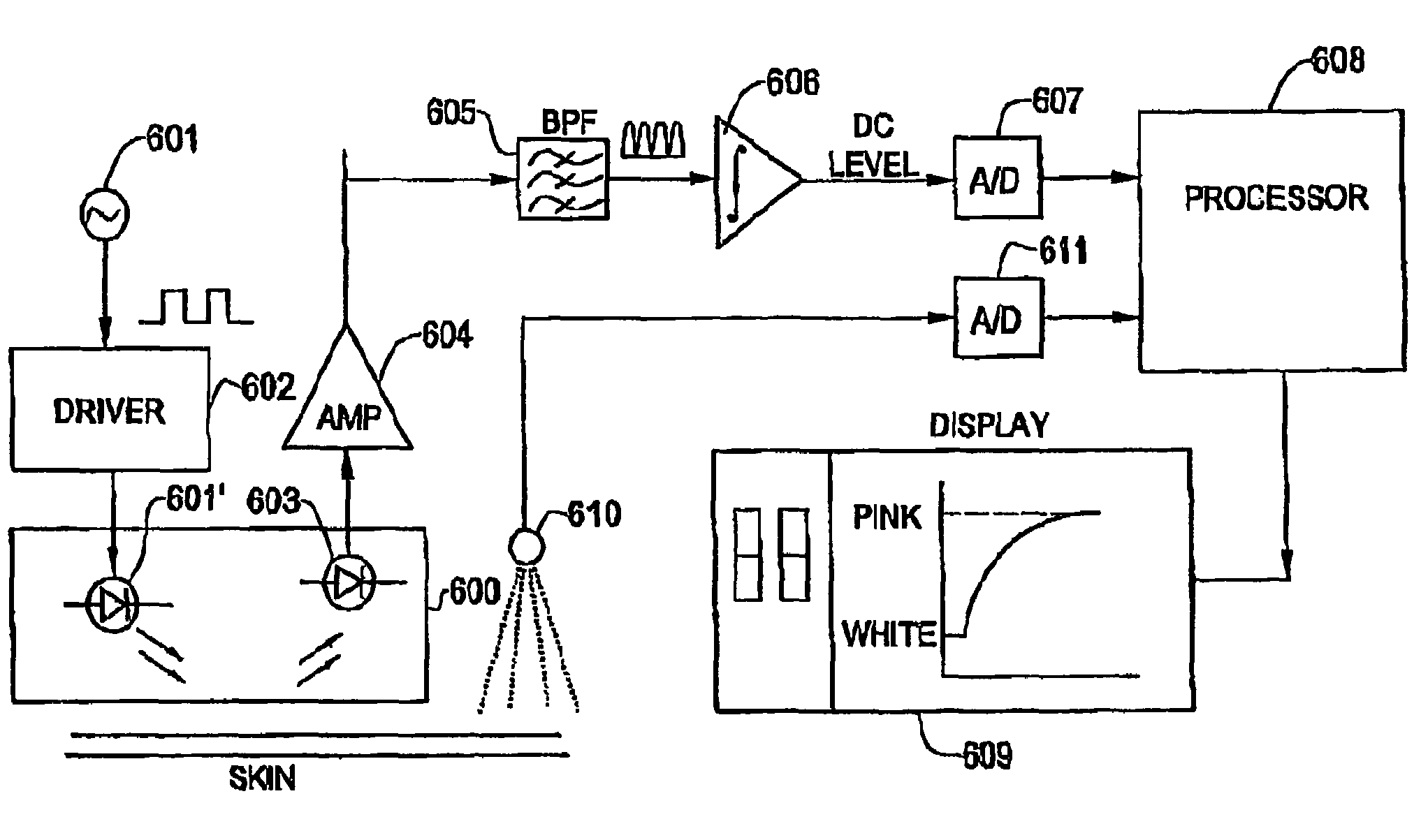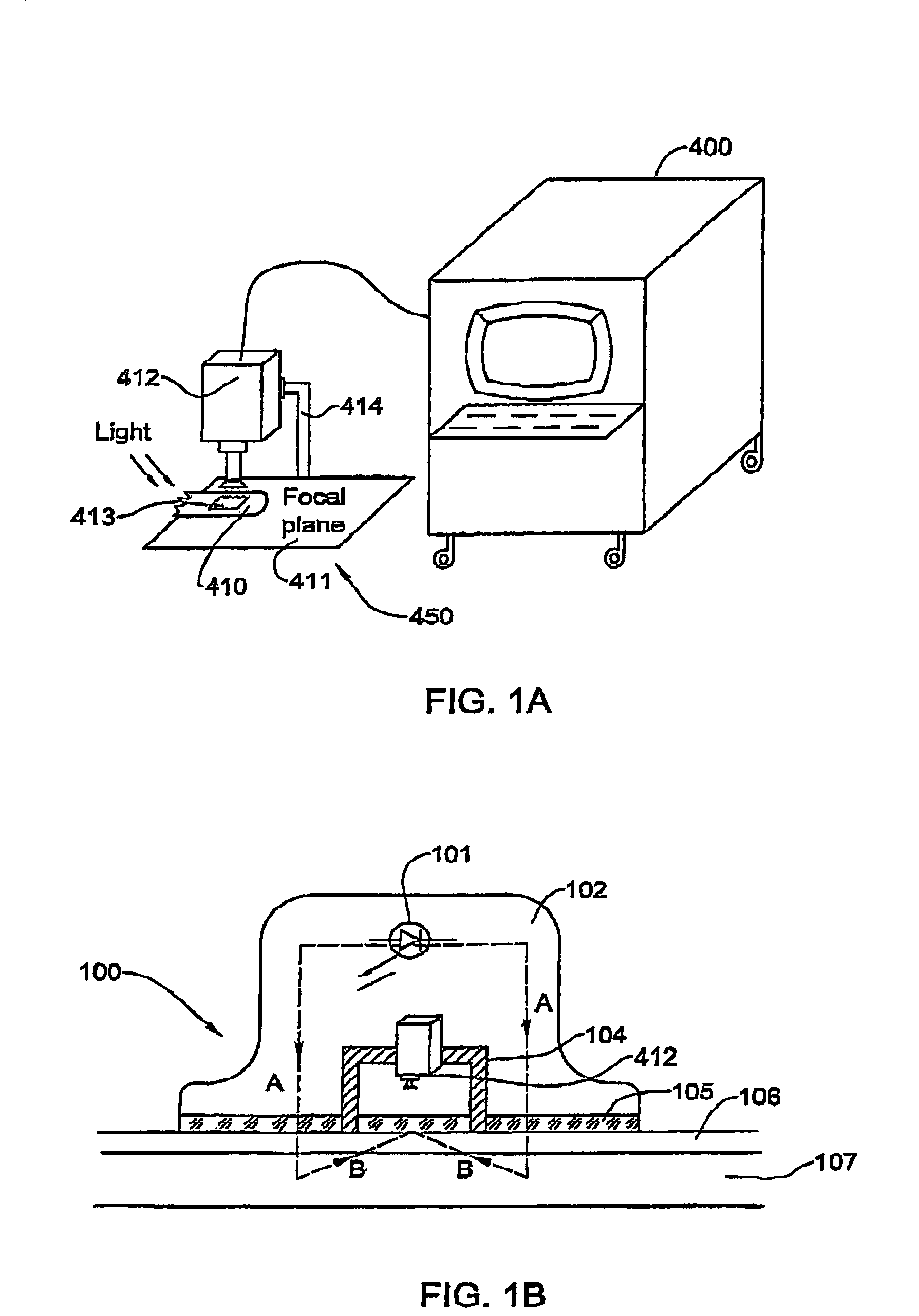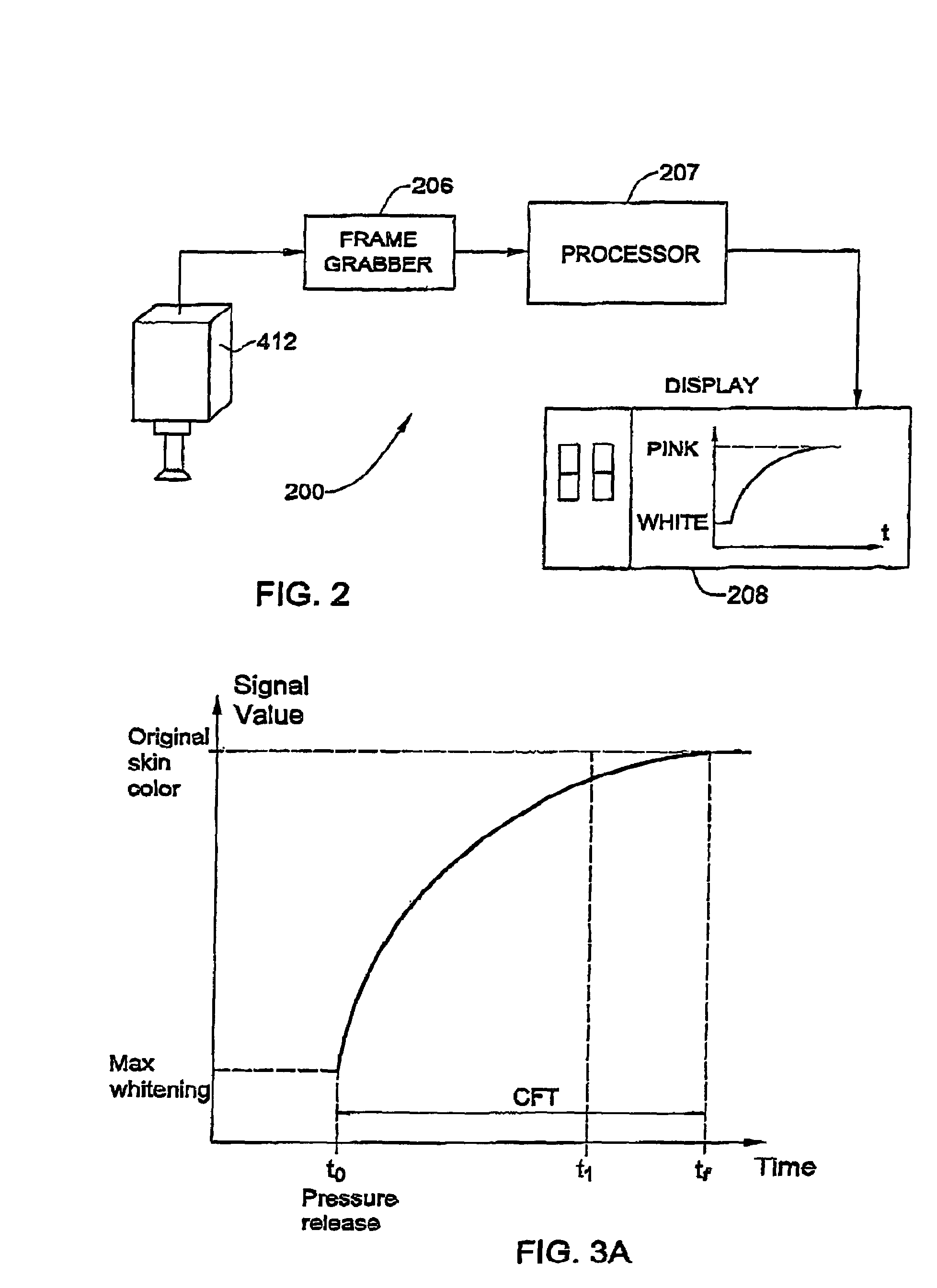Non-invasive method and apparatus to detect and monitor early medical shock, and related conditions
a non-invasive, medical shock technology, applied in the direction of optical radiation measurement, instruments, spectrometry/spectrophotometry/monochromators, etc., can solve the problems of reducing the availability of blood for other vital organs, affecting the metabolism of organs, and affecting the perfusion of other vital organs
- Summary
- Abstract
- Description
- Claims
- Application Information
AI Technical Summary
Benefits of technology
Problems solved by technology
Method used
Image
Examples
first embodiment
[0059]Schematically illustrated in FIG. 1A is a CFT instrument 450 adapted to diagnose a shock-related condition in a patient by measuring capillary filling time and rate.
[0060]Instrument 450 includes a camera 412, such as a color video camera, fixed in place by a holder 414 above a rigid table surface 411 on which an appendage 410 of a patient rests. This appendage may for example be the patient's finger. The position of camera 412 is adjusted so that the skin area 413 viewed by the camera for purposes of CFT measurement, is in or is close to the focal plane of the lens. Pressure may be applied to and released from skin area 413 manually or by using mechanical apparatus which may be automatically controlled.
[0061]Skin area 413 is illuminated by background light, and light reflected from the surface of this area is received in the lens of camera 412. A minimal illumination level of 0.2 lux is sufficient for most currently-available modern cameras for color discrimination. Camera 412...
second embodiment
[0086]This embodiment of a CFT diagnostic instrument differs from the instrument shown in FIG. 1 mainly in the nature of its skin color sensor. However, in all other respects it operates in the same manner as does the first embodiment.
[0087]FIG. 5. Schematically illustrates the structure of a skin color sensing device 500 for the diagnosis of a shock-related state in a patient by measure the capillary filling time and rate according to the second embodiment of the invention. Device 500 includes a continuous (non-modulated) or a pulsating (modulated) light source 501, such as a Light Emitting Diode (LED) driven by a rectangular voltage pulse generator at a predetermined frequency fo. Light source 501 is enclosed in a light-reflecting external housing 502 having an opening in its bottom side so that most of the light radiation emitted from light source 501 is directed toward the bottom side in one direction “A”. External housing 502 has within it an opaque internal housing 504 contain...
third embodiment
[0095]The third embodiment is substantially similar to the second embodiment, as described herein, with the following differences, mutatis mutandis. FIG. 9 is a block diagram of an apparatus 700 in the third embodiment for diagnosing a shock-related state in a patient by measuring capillary filling time and rate. Apparatus 700 comprises a constant source 712 operated at a DC voltage. The output of source 712 is fed into a driver 702 which provides energy to power light source 701 to emit non-modulated, continuous light. Light reflected from the skin is converted by light sensor 703 to a corresponding electrical signal. This signal is fed into an amplifier 704 operating at near-DC frequency band to increase the amplitude of the electrical signal.
[0096]Light sensor 703 is may be sensitive to the full color spectrum, or alternatively most sensitive to light radiation to a particular range of wavelengths, for example between red and infra-red in the color spectrum The sensor 703 may als...
PUM
 Login to View More
Login to View More Abstract
Description
Claims
Application Information
 Login to View More
Login to View More - R&D
- Intellectual Property
- Life Sciences
- Materials
- Tech Scout
- Unparalleled Data Quality
- Higher Quality Content
- 60% Fewer Hallucinations
Browse by: Latest US Patents, China's latest patents, Technical Efficacy Thesaurus, Application Domain, Technology Topic, Popular Technical Reports.
© 2025 PatSnap. All rights reserved.Legal|Privacy policy|Modern Slavery Act Transparency Statement|Sitemap|About US| Contact US: help@patsnap.com



